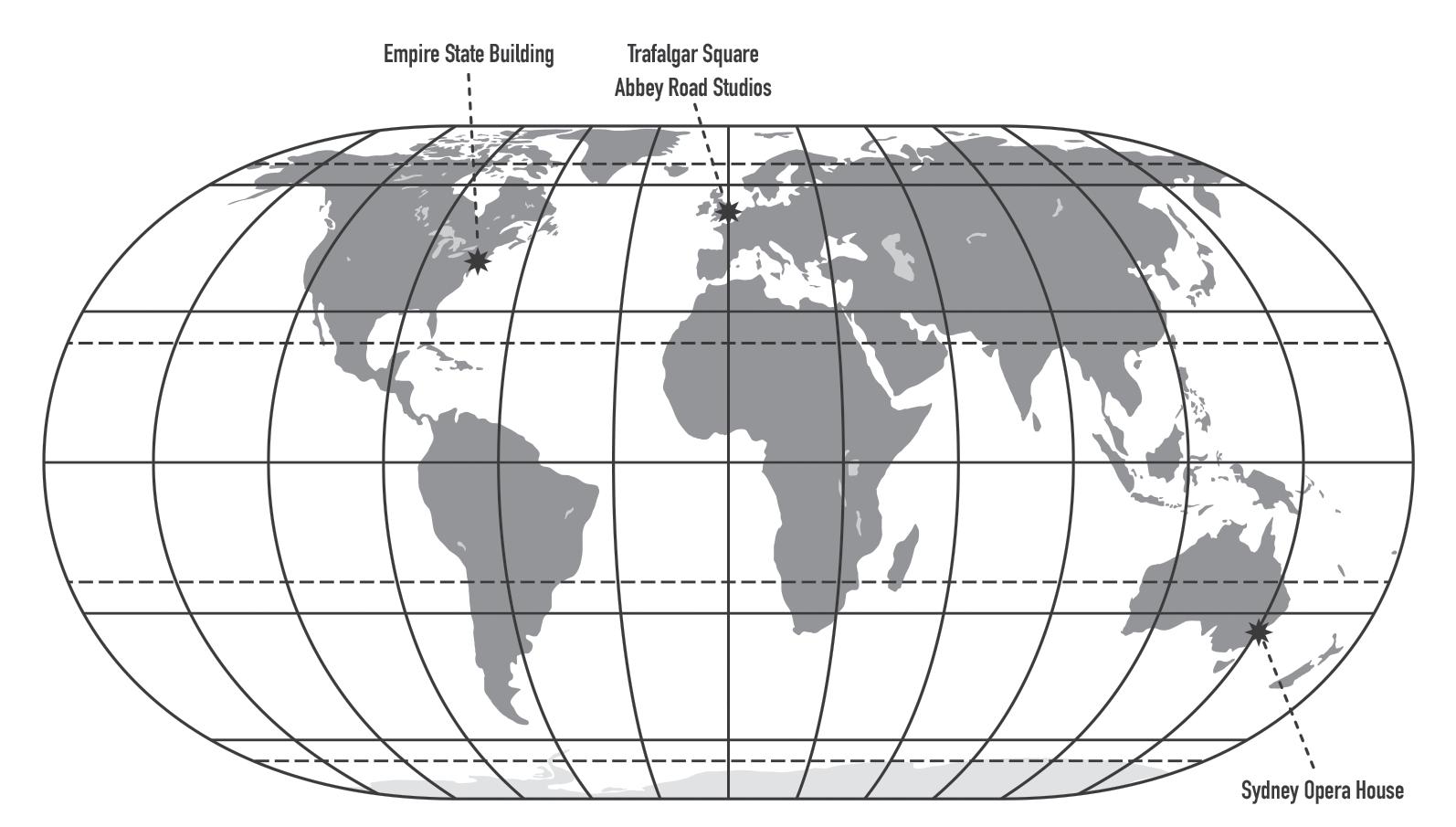

ALMANAC
THE TIME-TRAVELLING
ALMANAC
THE OFFICIAL GUIDE TO THE DOCTOR’S YEAR
SIMON GUERRIER

BBC Books, an imprint of Ebury Publishing Penguin Random House UK One Embassy Gardens, 8 Viaduct Gdns, Nine Elms, London SW11 7BW
BBC Books is part of the Penguin Random House group of companies whose addresses can be found at global.penguinrandomhouse.com
Copyright ©Simon Guerrier 2024
Illustrations © Emma Price
Simon Guerrier has asserted his right to be identified as the author of this Work in accordance with the Copyright, Designs and Patents Act 1988
Penguin Random House values and supports copyright. Copyright fuels creativity, encourages diverse voices, promotes freedom of expression and supports a vibrant culture. Thank you for purchasing an authorized edition of this book and for respecting intellectual property laws by not reproducing, scanning or distributing any part of it by any means without permission. You are supporting authors and enabling Penguin Random House to continue to publish books for everyone. No part of this book may be used or reproduced in any manner for the purpose of training artificial intelligence technologies or systems. In accordance with Article 4(3) of the DSM Directive 2019/790, Penguin Random House expressly reserves this work from the text and data mining exception.
Doctor Who is produced in Wales by Bad Wolf with BBC Studios Productions
Executive Producers: Russell T Davies, Julie Gardner, Jane Tranter, Joel Collins & Phil Collinson
First published by BBC Books in 2024 www.penguin.co.uk
A CIP catalogue record for this book is available from the British Library
ISBN 9781785949173
Publishing Director: Albert DePetrillo
Project Editor: Steve Cole
Cover: Toby Clarke
Text Design: Jonathan Baker
Production: Antony Heller
Printed and bound in Great Britain by Clays Ltd, Elcograf S.p.A.
The authorised representative in the EEA is Penguin Random House Ireland, Morrison Chambers, 32 Nassau Street, Dublin D02 YH68.
Penguin Random House is committed to a sustainable future for our business, our readers and our planet. This book is made from Forest Stewardship Council® certified paper.
INTRODUCTION 1
JANUARY 6
FEBRUARY 30
MARCH 46
APRIL 60 MAY 80
JUNE 100
JULY 116
AUGUST 134
SEPTEMBER 154
OCTOBER 172
NOVEMBER 192
DECEMBER 220
ACKNOWLEDGEMENTS 249
INTRODUCTION
DOCTOR
Wait, what year are you from?
RUBY 2024.
DOCTOR
Ooh, ha ha! Yikes… Spoilers! Forget I said anything.
73 Yards by Russell T Davies (2024)
The Doctor won’t tell Ruby Sunday exactly what the future holds. That involves spoilers and cheating.
Even so, if we want to be ready for what’s coming, it helps to know what’s been, and how the past and future are all connected to right now. Get a sense of your true position, your trajectory through time and space, and you’ll be more alert to all the wonders going on.
The Doctor once told his friend Rose Tyler that our ‘entire planet is hurtling round the Sun at 67,000 miles an hour’. That’s an amazing 107,826 km per hour, or 18.5 miles / 29.8 km per second. That is fast, and yet most of the time we don’t even notice.
1 x complete orbit = 940,000,000 km 1 Jan
Even then, it takes 365.25 days to cover the 940 million km to complete an orbit around the Sun and come back to where we started. (It’s not exactly where we started because the Sun is also moving through space.)
But think of it this way. Each day of the year is a point in that orbit. Right now, as you read this, you’re in the same bit of the orbit as this time a year ago, and the year before that, stretching back into time.
And as we orbit, we’re connected to that past. Each 1 January reminds us of the ones before. Every birthday, anniversary or mention of a past date connects us back in time, while we’re moving ever onwards through time.
Because we’re also heading forwards, moving at 1 second per second into the future.
The Earth keeps moving. We never stop on any date; we’re always passing through. A new year or anniversary reminds us that we’re all travellers in space and time.
Ruby Sunday gains this perspective by travelling in time and space with the Doctor. We hope to provide you with something similar in this book.
But what is an ‘almanac’ exactly? Well, to be honest, no one’s really sure where the word comes from or its original meaning. The earliest known use of the word is from the year 1267, when monk, wizard and genius proto-scientist Roger Bacon used it to mean a collection of charts and other stuff detailing the movements of the Moon and objects in the sky. Bacon – who was also known as Doctor Mirabilis (meaning ‘Doctor Amazing’) – seems to have used this information as his own special guide through the year. Since then, popular almanacs have also included advice and observations, insights into history and science, recipes and jokes.
With that in mind, we’ve packed this book full of useful information and fun stuff to help enliven and illuminate your journey through 2025. Along the way, we’ll provide ways to orient yourself in the universe, using the stars and your senses to get your bearings. We’ll look at why Easter is on a different date every year, show you how to cook up a feast like Sylvia Noble and how the history of The Beatles is interwoven with that of the Doctor.
But we want you to take an active part in this book, too. Roger Bacon compiled his almanac because he didn’t just accept what he read in other books, or what people in authority told him. He always wanted to test what was said.
So, with this book, we hope that you’ll test it, play with it and see where it takes you. Most of all, we hope that whatever might be coming along in 2025, you have a great adventure.
Happy times and places
Simon
The information in this book is organised as follows:
Aircraft
Birthday of actor with major role in Doctor Who or a character
Christmas
Clothes
Daleks
Dancing
Dates in history
Easter
Empire State Building
Exits from Doctor Who
First broadcast of an episode
* Episodes usually first broadcast in the UK – but when not we’ll note their first broadcast and their first UK broadcast
First instance of something in Doctor Who
Food and recipes
Ha ha ha ha ha ha ha!
Music
Navigation
Space
Shark Speech
Spin-off TV series from Doctor Who
* All episodes are available to view for free on BBC iPlayer at time of writing but note that Torchwood and Class are aimed at an adult audience and contain adult themes, violence and upsetting scenes
Submarine
Tides
Wasp
New Moon
Full Moon
Moon First Quarter
Moon Third Quarter
Mars
Mercury
Neptune
Saturn
Venus
Meteors
Stars Sun
Uranus
JANUARY
01 JAN 1966 The Daleks’ Master Plan: Volcano
The TARDIS briefly stops in Trafalgar Square, London, as people celebrate New Year. This was surely meant to suggest that events on screen were happening on the same day as broadcast, the first (but not last) time this happens in Doctor Who.
But the episode was recorded on 3 December 1965 and used stock footage of Trafalgar Square, so it showed a New Year from at least 12 months before.
Where on Earth is Trafalgar Square?
Trafalgar Square in London appears in several Doctor Who stories. It’s conquered by Daleks in The Dalek Invasion of Earth (1964); it’s where Rose Tyler and her boyfriend Mickey Smith have lunch in Rose (2005). In The Day of the Doctor (2013), the Eleventh Doctor arrives in Trafalgar Square, hanging from the bottom of the TARDIS, which is in turn suspended from a helicopter.
Imagine trying to set the controls of the TARDIS to land in Trafalgar Square. How do we pinpoint a location on Earth?
For hundreds of years, we’ve mapped the Earth using a coordinate system based on the points of a compass.
To measure any position north to south, we use latitude. The northernmost point on Earth, the North Pole, is measured as 90° N. The Equator, straddling the middle of the Earth, is 0°. The southernmost point on Earth, the South Pole, is 90° S.
To measure any position east or west, we use longitude based on a starting point called the prime meridian. A meridian is an imaginary, straight line from the North Pole to the South Pole. We could measure from any such line, but since the 1890s the agreement has been to use the line that bisects Greenwich in London. This is measured as 0° longitude.
We then measure degrees either east or west of this prime meridian. The meridian directly opposite Greenwich on the other side of the world is both 180° E and 180° W. So, if you’re setting the controls of the TARDIS:
• Trafalgar Square in London is 51.5080° N, 0.1281° W.
• Abbey Road Studios is relatively nearby at 51.5322° N, 0.1778° W; the Doctor and Ruby first meet The Beatles there (when it was called EMI Recording Studios).
• The Empire State Building in New York, where the First Doctor and the Tenth Doctor both encountered Daleks, is further away at 40.7484° N, 73.9857° W.
• Sydney Opera House in Australia, where the Twelfth Doctor takes Bill Potts, is 33.8568° S, 151.2153° E.

01 JAN 1972 Day of the Daleks 1
01 JAN 1977 The Face of Evil 1
First appearance of warrior Leela of the Sevateem, who travels with the Fourth Doctor
01 JAN 2000 The Eighth Doctor kisses Dr Grace Holloway then heads off in the TARDIS.
01 JAN 2005 The dying Tenth Doctor speaks to Rose Tyler a few minutes into the new year and a few months before she meets his earlier self for the first time, in The End of Time 2 (2010).
01 JAN 2007 The Sarah Jane Adventures: Invasion of the Bane and Torchwood: Captain Jack Harkness and End of Days
First episode of spin-off series The Sarah Jane Adventures, which ran for 53 episodes
01 JAN 2010 The End of Time 2
First appearance of the Eleventh Doctor
01 JAN 2019 Resolution
A discovery at an archaeological site in Sheffield is bad news for the Doctor, with events taking place on the same day as broadcast.
01 JAN 2020 Spyfall 1
First appearance of a new incarnation of the Master
01 JAN 2021 Revolution of the Daleks
Ryan Sinclair and Graham O’Brien leave the TARDIS.
01 JAN 2022 Eve of the Daleks
Events seem to take place on the same day as broadcast but it’s not stated on screen.
01 JAN 2025 Quadrantids
At the beginning of Spearhead from Space (1970), a UNIT radar station detects an incoming shower of meteors. The odd thing is that they’re flying in formation – and heading for Oxley Woods in the UK, exactly the same spot on the ground as a previous meteor shower six months earlier.
Meteors that reach the ground are called ‘meteorites’. But as UNIT’s first scientific adviser, Dr Elizabeth Shaw, says, ‘two lots of meteorites landing in exactly the same place’ is ‘impossible’. This can only mean that these aren’t meteors at all but something much more sinister… The Nestene Consciousness has begun its invasion of Earth and soon Autons are stalking the streets.
Real meteors are seen at regular times each year, a fixture of our journey round and round the Sun. The path of Earth’s orbit passes through different trails of rocks, ice and dust, each one usually the debris left behind by passing comets. Larger chunks of this rock and ice burn up in Earth’s atmosphere, which can be visible to us on the ground as quick, bright streaks. These meteors can be so bright they’re also known as ‘shooting stars’ or even ‘fireballs’.
With each orbit, we pass once more through the same sequence of comet trails, meaning that any given meteor shower occurs at the same time each year. This particular meteor shower, the Quadrantids, is produced by dust grains in the trail of a now extinct comet named 2003 EH1, after the year it was first discovered.
Meteors don’t fly in formation. Seen from Earth, the meteors in any given shower seem to radiate from a single point in the sky.
That point varies for each particular shower, so meteor showers are generally named after the stars visible behind that point of radiation.
The Quadrantids get their name from the ‘mural quadrant’, a wall-mounted device that astronomers used to use to chart the stars. In 1795, French astronomer Jérôme Lalande thought that stars in this part of the sky made a pattern resembling one of these quadrants. For a while, other astronomers used Lalande’s name for the stars and for the meteors that seemed to radiate from them.
In 1922, the International Astronomical Union agreed a list of 88 officially recognised patterns of stars, or ‘constellations’. Lalande’s quadrant didn’t make the list, but the Quadrantids kept their name. (They’re now said to radiate from the officially recognised constellation Boötes, see page 91.)
Visible between 1 and 5 January each year, the greatest concentrations are visible (or ‘peaking’) on the night of 3–4 January. Although as many as 100–130 meteors might be seen during these peaks, the Quadrantids aren’t especially bright compared to other meteor showers later in the year. Some years, they only appear for about an hour.
There are lots of different meteor showers throughout the year but in this book we’ll list only the main ones as we cross paths with these other space travellers.
Tips for meteor-spotting
First, give your eyes time to adapt to the dark. This can take about 10 minutes, after which you’ll be able to see meteors (and the stars and other objects in the sky) much better. A bright light such as a torch can mean you have to start again with letting your eyes adapt to the dark. Astronomers often use special red-light torches which don’t make too much light.
When watching meteors and other dim objects in the sky, it helps not to look directly at them. That’s because of the two kinds
of sensory receptor in your eye. Cone receptors are mostly found in the centre of your retina. They sense detail and colour, but need to receive a lot of light. Then, on the sides of the retina, there are lots and lots of rod receptors. These don’t pick out detail or colour, but they are sensitive to low levels of light. That means we rely on them more in the dark – and is why we don’t see detail or colour outdoors at night.
In fact, when people talk about seeing something out of the corner of your eye, this is what they mean. You can even train yourself to do it and so see meteors more clearly. (The Doctor shows Amy Pond how to do this in The Eleventh Hour, so she can spot the alien Prisoner Zero hiding in her home.)
The trick is not to look directly at the thing you want to see, but just off to one side.
02
JAN 1965 The Rescue: The Powerful Enemy
First appearance of orphan Vicki, who travels with the First Doctor
Where in space is Dido?
‘Fancy landing back here again,’ says the Doctor when he discovers that the TARDIS has landed once more on the planet Dido. He even thinks about telling his companions that he’s taken them there on purpose.
How does the Doctor direct the TARDIS to particular worlds? It seems that the TARDIS can be programmed with coordinates, just like we can use longitude and latitude on Earth today or enter a name into satnav (which then determines the longitude and latitude for itself).
In fact, we also plot the positions of objects in space using a coordinate system. To do this, we have to imagine the stars as
though they’re fixed on a huge, transparent sphere, with Earth right at the centre.
On this celestial sphere, ‘Right ascension’ or RA is the equivalent of longitude. ‘Declination’ or ‘dec’ is the equivalent of latitude. Any star or other body in space can be plotted using these coordinates. That includes the path of the Sun as it moves through the sky over the course of a year. Ancient astronomers noted that when the path of the Moon crosses this path of the Sun, we get lunar or solar eclipses. As a result, the path of the Sun is known as the ecliptic.
The other seven planets of the Solar System – Mercury, Venus, Mars, Jupiter, Saturn, Uranus and Neptune – all orbit the Sun in more or less the same plane as the Earth. That means that, seen from Earth, they all appear within 8° above or below the ecliptic. We call this 16° band (with the ecliptic at its centre) the zodiac.
In astronomy, the zodiac is divided into 13 equal-sized patterns of stars or ‘constellations’ that the Sun passes through over the course of the year. This owes something to the much older astrological tradition, where the position of the Sun, Moon and other planets relative to the zodiac is used to make predictions about the future. The astrological zodiac is often divided into 12 signs rather than 13.
Of particular significance to astrology is the division through which the Sun was passing on the day you were born. With this, astrologers can create a ‘horoscope’, with predictions about what’s going to happen in your life.
Dalek horoscope for 2025

21 March–19 April ARIES (the Ram)
You will be exterminated!

21 May–21 June GEMINI (the Twins)
You will be exterminated!

23 July–22 August LEO (the Lion)
You will be exterminated!

23 Sept–23 Oct LIBRA (the Scales)
You will be exterminated!

22 Nov–21 Dec SAGITTARIUS (the Archer)
You will be exterminated!

20 Jan–18 Feb AQUARIUS (the Water Bearer)
You will be exterminated!






20 April–20 May TAURUS (the Bull)
You will be exterminated!
22 June–22 July CANCER (the Crab)
You will be exterminated!
23 August–22 Sept VIRGO (the Maiden)
You will be exterminated!
24 Oct–21 Nov SCORPIO (the Scorpion)
You will be exterminated!
22 Dec–19 Jan CAPRICORN (the Goat)
You will be exterminated!
19 Feb–20 March PISCES (the Fish)
You will be exterminated!
02 JAN 1971 Terror of the Autons 1
First appearance of the villainous Time Lord the Master in Doctor Who and also of UNIT staff member Josephine ‘Jo’ Grant, who travels with the Third Doctor
02 JAN 2025 Quadrantids
03 JAN 1970 Spearhead from Space 1
First appearance of the Third Doctor and of scientist Dr Liz Shaw; first mention of the Doctor having two hearts
Escaping from hospital, the newly regenerated Third Doctor steals distinctive clothes from consultant Dr Beavis, including a black velvet jacket and white frilly shirt. He never gives these back, wearing them in several further stories up to The Sea Devils (1972). (Doubtless, UNIT offered Dr Beavis financial compensation.)
03 JAN 1976 The Brain of Morbius 1
03 JAN 1981 Warriors’ Gate 1
03 JAN 1983 Arc of Infinity 1
03 JAN 2025 Quadrantids – peaks in the evening (and next morning)
.
04 JAN 1964 The Daleks: The Escape
04 JAN 1969 The Krotons 2
04 JAN 1975 Robot 2
04 JAN 1982 Castrovalva 1
04 JAN 1989 The Greatest Show in the Galaxy 4
04 JAN 2025 Quadrantids – peaks in the early morning (and previous evening)
05 JAN 1974 The Time Warrior 4
05 JAN 1980 The Horns of Nimon 3
05 JAN 1982 Castrovalva 2
05 JAN 1983 Arc of Infinity 2
05 JAN 1984 Warriors of the Deep 1
05 JAN 1985 Attack of the Cybermen 1
05 JAN 1988 Mandip Kaur Gill, who plays the Doctor’s friend Yasmin ‘Yaz’ Khan
05 JAN 2020 Spyfall 2
05 JAN 2025 Quadrantids
06 JAN 1968 The Enemy of the World 3
06 JAN 1973 The Three Doctors 2
06 JAN 1979 The Power of Kroll 3
06 JAN 1984 Warriors of the Deep 2
06 JAN 2025 First Quarter
07 JAN 1967 The Highlanders 4
07 JAN 1978 Underworld 1
08 JAN 1908 William Henry Hartnell, who played the First Doctor
08 JAN 1966 The Daleks’ Master Plan: Golden Death
08 JAN 1972 Day of the Daleks 2
08 JAN 1977 The Face of Evil 2
09 JAN 1965 The Rescue: Desperate Measures
09 JAN 1971 Terror of the Autons 2
10 JAN 1970 Spearhead from Space 2
10 JAN 1976 The Brain of Morbius 2
10 JAN 1981 Warriors’ Gate 2
10 JAN 2025 Tonight is one of the best evenings of the year to view planet Venus because it reaches its highest point above the horizon. If the sky is clear of cloud, look west just after sunset. (To find the compass points, remember that the Sun sets in the west and rises in the east.)
